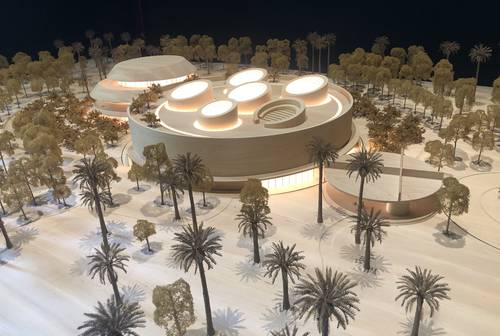The event in Venice is an opportunity to look at Africa and its diaspora without clichés and to establish frank communication with that territory.Photo Alejandra Ortiz
Venice. Africa is unknown in the West, except for the news of the political, environmental and migratory crises, and yet it is considered the continent of the future
. For this reason, the 18th Architecture Biennale that is taking place these days in Venice is an opportunity to look at that region and its diaspora, without clichés, as well as to establish frank communication with this territory.
If the United States until recently had considered Africa just a problem, China for two decades has established a massive influence in the region through loans and infrastructure, while Russia also has a significant presence in that region.
Africa now demands a different relationship with investors, as will not just remain a source of raw materials, but an equitable trading partner
according to Albert Muchanga, Trade Commissioner of the African Union.
Faced with these changes, the biennial proposes an active and purposeful model of architecture where African culture is valued with a virtuous project of change.
The primary objective of the meeting has always been to reflect on and discuss burning issues of our time, in a forum with global visibility that sets trends. Strangely, Africa, regarding the plastic arts, has obtained it late. contemporary art exhibition Documenta from Kassel he dedicated the 2002 edition to it, as well as the Venice Art Biennale in 2015, both curated by the great Okwui Enwezor (1963-2019).
These days, Africa at the Architecture Biennale continues to have a derisory representation in the national pavilions: of the 54 countries that make up the continent, only Egypt and South Africa have a stable venue. Niger this year is the only additional country to participate, with an off-center slot on the island of San Servolo.
Of the 89 participants, half are African and from the diaspora; the rest, from the so-called south of the world. The impeccable curation in which the color brown dominates presents fresh, challenging and critical ideas in counter-trend to the European right-wing wave.
The novelty is not only in the origin of people, but in their aspirations, projects and priorities. These are some of the projects that the public will be able to see until November 26. The challenge will be to see if the model will have a positive impact on the world architecture.
New South, for example, recreates the sensations of a Parisian migrant returning home to Algeria. The domestic walls become a feminine affective site. Every member who arrives comes care, nurtured, entertained
and when leaving comes fired with dates, medicines, a jar of honey
among many other things.
The irregular, sinuous, open, circular, perforated models of Adjaye Associates break with the hermetic and grandiose masses of colonial architecture. A return to traditional architecture is being sought, such as the Edo Museum of Western African Art, a recreation of old Benin City.
DAAR, which was the winning firm of the Golden Lion for best participation, shows a project focused on the decolonization of the fascist architecture of Borgo Rizza, a Sicilian town built as part of a development plan in Sicily during the fascist regime in 1940. Mussolini did the same in Libya, Somalia, Eritrea and Ethiopia.
Nature, fantasy, resilience, have overcome the dystopian past of every African-American
, according to the New York firm UrbanAC, based on a multidisciplinary practice. Their projects are designed to create fairer cities, as they propose in the installation that recovers the stories of eight inhabitants of Chicago’s Black Belt, who change this space of segregation in the south of Chicago.
Famous Ghanaian artist Ibrahim Mahama, known for covering buildings with jute sacks, shows his Red Clay studio in Tamale Ghana, which is not a personal and solitary space, but a public one, because everyone should have access to art
. The artist acquired the colonial-era Gold Coast railway station and old 19th-century trains that he is transforming into classrooms, libraries, residential spaces, and more.
The Hood Design Studio, made up of Walter Hood and the Mexican Alma Du Solier, who spoke with The Conferencemade a master plan for a pavilion to sell traditional baskets in order to preserve the cultural landscape native
of the Gullah Geechees. It refers to the ancient community of enslaved African-Americans on rice plantations, settled in a huge swampy coastal area (from Wilmington, North Carolina, to Jacksonville, Florida), which, due to its inhospitability, allowed the preservation of culture and language. for centuries against the threats of current urban growth, now protected by having been declared a national heritage.
